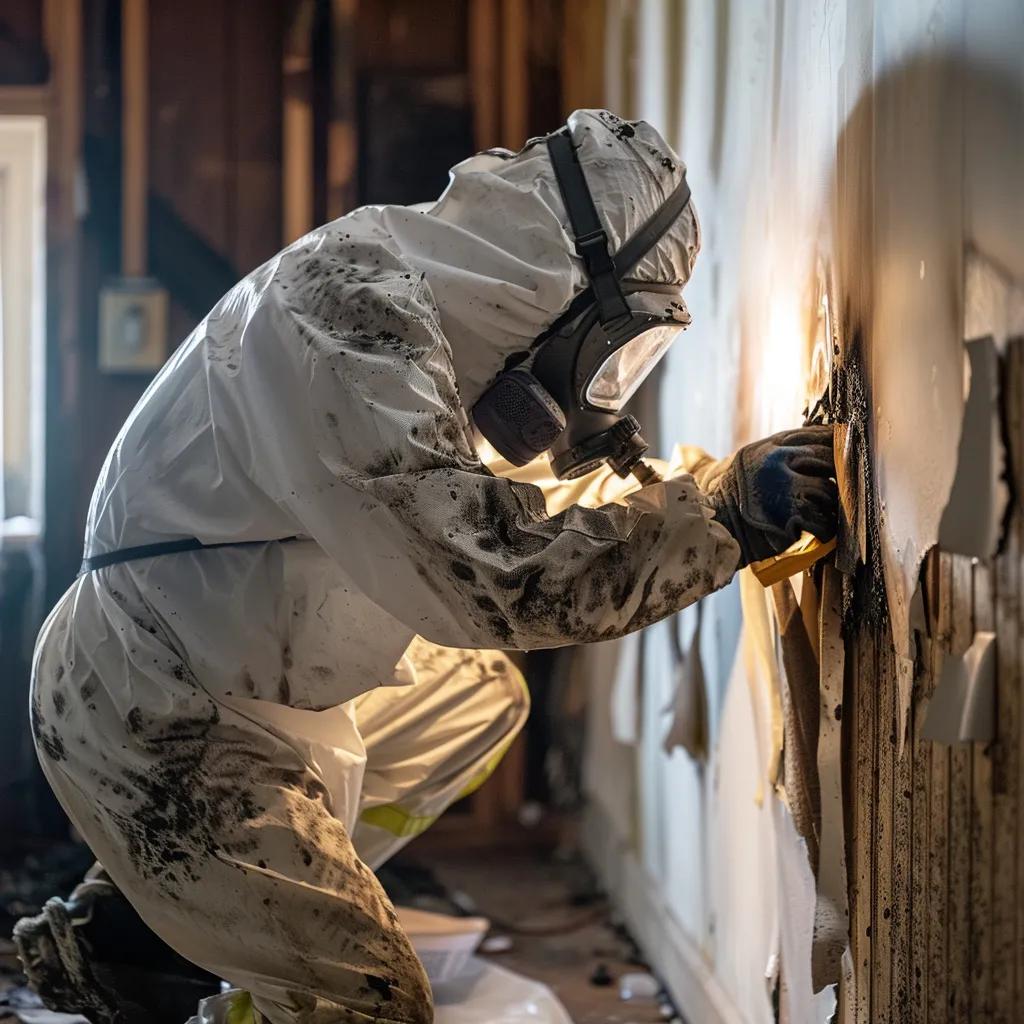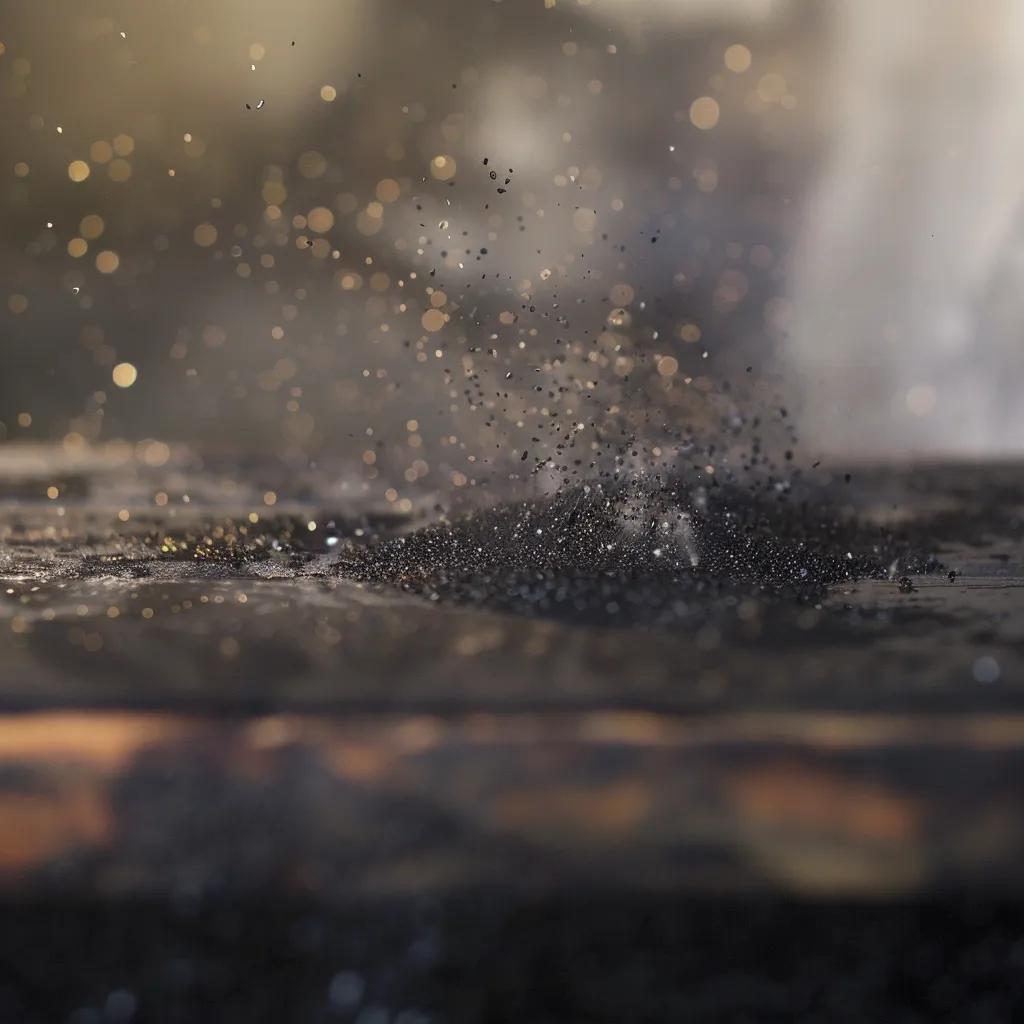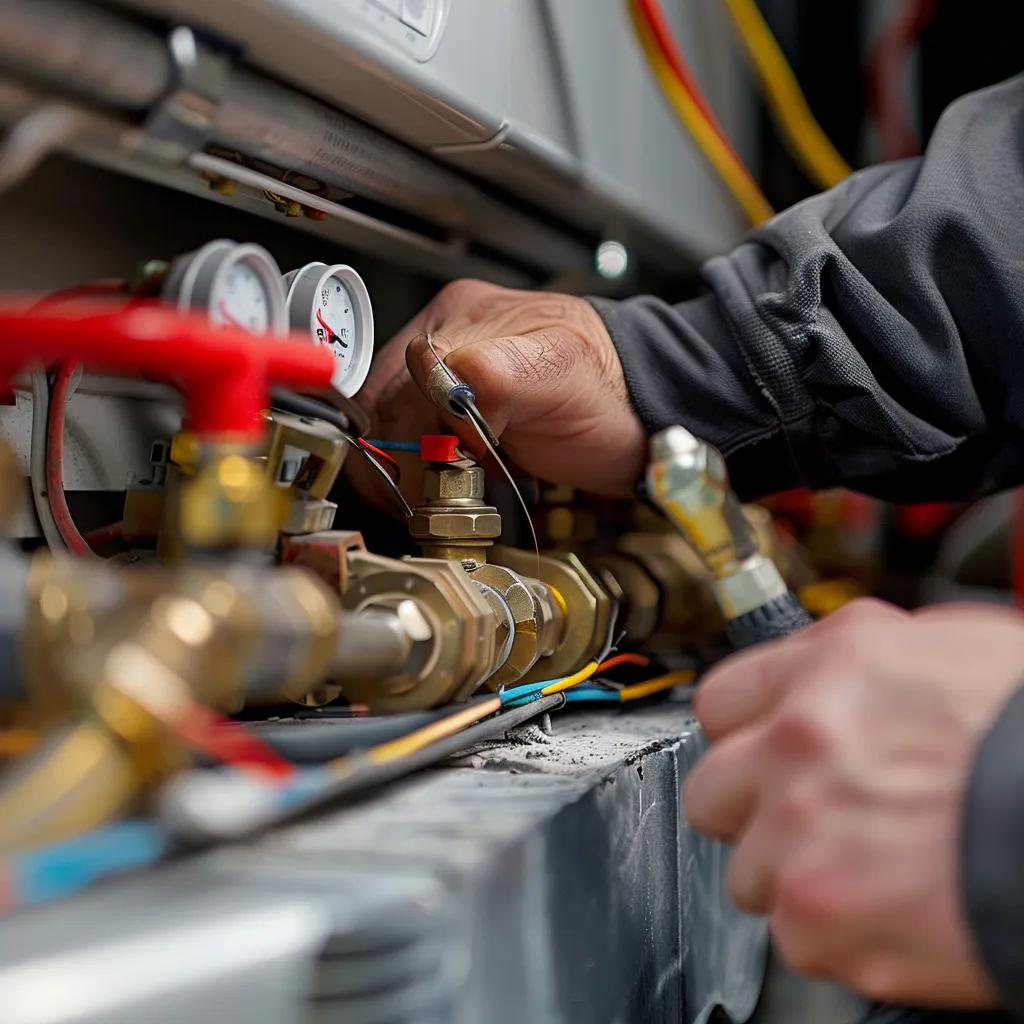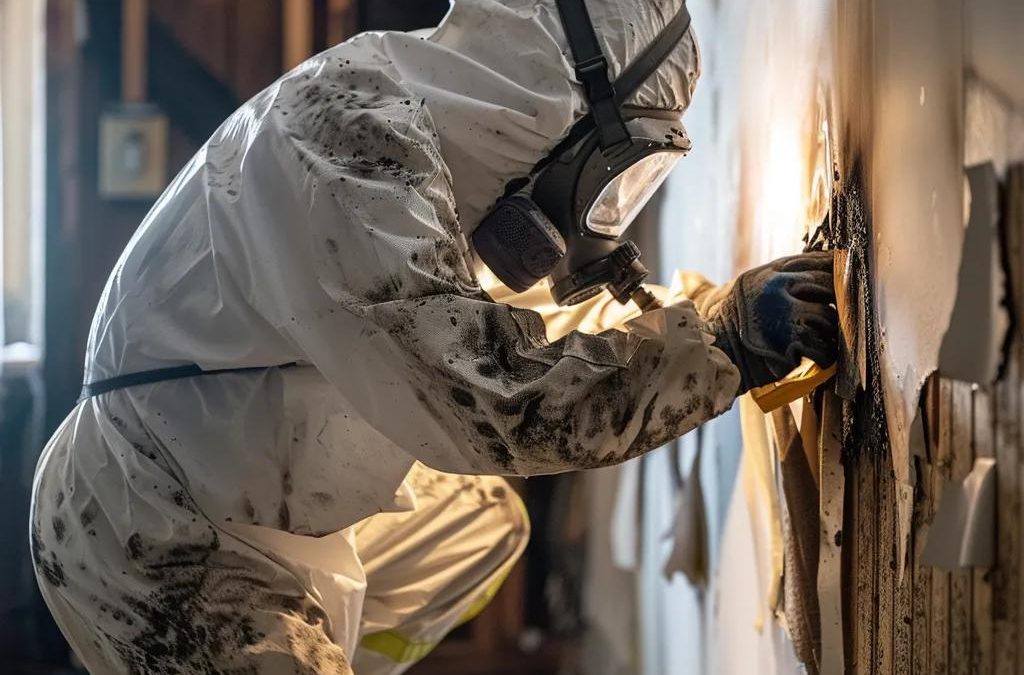
Puff Back Cleanup Steps Explained for Homeowners: Complete Guide to Professional Restoration and Prevention

A furnace puff back can coat every surface in oily soot within seconds, posing serious health risks and costly property damage. In this guide, you will discover the exact puff back cleanup steps professionals use to restore safety, eliminate odors, and return your home to pristine condition. We’ll define what a puff back is, explore the damage soot causes, detail each cleanup and restoration technique, outline preventive HVAC maintenance, explain insurance claim navigation, highlight why Restoration Experts is New York’s trusted choice, and share immediate actions to take after an incident.
What Is a Puff Back and How Does It Affect Your Home?
A puff back is a sudden furnace misfire that ignites accumulated oil vapors, releasing a cloud of sticky, toxic soot throughout living spaces. This event can blacken walls, infiltrate ductwork, and leave a lingering odor that resists ordinary cleaning. For example, a long-neglected oil burner nozzle can clog and trigger a puff back that coats ceilings and furniture in residue.
What Causes a Furnace Puff Back? Common Malfunctions and Issues
Below are the primary furnace malfunctions that lead to puff backs:
- Clogged Nozzle → Nozzle blockage prevents fuel atomization, causing unburned oil to ignite explosively.
- Faulty Ignition System → Weak spark or delayed ignition allows fuel to accumulate before combustion.
- Oil Supply Leak → Fuel drips into the combustion chamber, creating pockets of high-volatility vapors.
- Chimney Restriction → Blocked flue prevents proper draft, forcing combustion byproducts back into the burner.
Each cause creates conditions for unburned fuel to ignite in a blast, which then spreads soot and smoke throughout the home.
What Types of Puff Backs Are There? Minor vs. Severe Incidents
Professional restoration categorizes puff backs by severity to plan the proper cleanup:
| Puff Back Type | Impact Scope | Typical Cleanup Effort |
|---|---|---|
| Minor Incident | Localized soot on furnace area | Surface cleaning and touch-up |
| Severe Incident | Whole-home soot deposition | Full structural and duct restoration |
Minor incidents usually require targeted cleaning, while severe puff backs demand comprehensive restoration and odor removal.
How Does a Puff Back Spread Soot and Odor in Your Home?
When a puff back occurs, pressurized combustion gases expel oily soot at high velocity. This soot adheres to porous materials—drywall, upholstery, carpets—and penetrates HVAC ducts. Airborne particulates carry odor molecules that settle in hidden corners, creating persistent smoke smells that resist DIY cleaning.
What Damage Does Puff Back Soot Cause to Your Property and Health?
Puff back soot, often resulting from a malfunctioning furnace or boiler, is a significant concern for property owners. This black, oily residue is ejected from heating systems in a sudden puff, leading to widespread contamination of interior spaces. The impact on property can be extensive; it not only stains walls, ceilings, and furnishings but can also compromise the integrity of HVAC systems. The accumulation of soot can clog filters and ducts, reducing the efficiency of heating systems and leading to costly repairs. Furthermore, the presence of puff back soot can create an unpleasant odor throughout the home, making spaces feel less inviting and more challenging to maintain.
From a health perspective, puff back soot poses serious risks. The fine particles found in this soot can become airborne and easily inhaled, leading to various respiratory issues, particularly for individuals with pre-existing conditions like asthma or allergies. Prolonged exposure to such contaminants can exacerbate symptoms and lead to other health complications. Moreover, the soot may contain harmful substances, including carbon monoxide, which can present life-threatening emergencies when inhaled in high concentrations. Therefore, addressing puff back soot promptly is essential not only for protecting the structural integrity of the property but also for safeguarding the health and well-being of its occupants. Regular maintenance of heating systems, combined with immediate remediation of any soot occurrences, is crucial to mitigating these risks and ensuring a safe living environment.
Which Areas of Your Home Are Most Affected by Puff Back Soot?
Below is an overview of common soot-affected areas:
| Area | Damage Type | Restoration Requirement |
|---|---|---|
| Walls/Ceilings | Staining and discoloration | Repainting and deep cleaning |
| Furniture | Fabric soiling | Professional upholstery cleaning |
| Carpets | Embedded soot | Industrial extraction cleaning |
| Ductwork | Interior coating | HEPA vacuum and duct sanitation |
| Personal Items | Odor absorption | Contents pack-out and deodorization |
What Are the Health Risks of Soot Exposure After a Puff Back?

Oily soot contains carcinogenic polycyclic aromatic hydrocarbons and fine particulates that irritate airways. Exposure can trigger coughing, headaches, asthma exacerbation, and long-term respiratory inflammation. Prompt professional removal safeguards indoor air quality and occupant health.
Health Risks of Soot Exposure
Exposure to soot can lead to various health issues, including respiratory irritation and potential long-term inflammation due to the presence of carcinogenic polycyclic aromatic hydrocarbons and fine particulates. Prompt professional removal is crucial to safeguard indoor air quality and protect occupant health.
Agency for Toxic Substances and Disease Registry (ATSDR), Toxicological Profile for Polycyclic Aromatic Hydrocarbons (PAHs) (2023)
This research supports the article’s claims about the health risks associated with soot exposure and the importance of professional cleanup.
Why Is Professional Soot Removal Critical for Safety and Restoration?
Yes, professional soot removal is essential because technicians use HEPA filtration, chemical sponges, and thermal fogging to neutralize toxins and eliminate odors at the molecular level. Attempting DIY cleanup often spreads soot further, embeds particles deeper into surfaces, and leaves dangerous residues behind.
What Are the Professional Puff Back Cleanup Steps and Techniques?
Professional puff back cleanup follows a standardized six-step process to ensure complete restoration:
- Initial Assessment – Evaluate soot spread, material damage, and odor intensity.
- Containment – Seal off unaffected areas and set up negative-pressure air scrubbers.
- Soot Removal – Apply HEPA vacuuming and chemical sponge cleaning on all surfaces.
- Odor Neutralization – Use thermal fogging or ozone treatment to eliminate residual odors.
- Duct Cleaning – Perform mechanical and HEPA vacuum cleaning inside HVAC ducts.
- Structural Repairs – Repaint walls, replace damaged drywall, and restore finishings.
Professional Soot Removal Techniques
Professional soot removal involves a multi-step process, including initial assessment, containment, soot removal using HEPA vacuuming and chemical sponges, odor neutralization through thermal fogging, duct cleaning, and structural repairs. These methods are designed to eliminate toxins and odors effectively.
Institute of Inspection, Cleaning and Restoration Certification (IICRC), S500 Standard and Reference Guide for Professional Water Damage Restoration (2015)
This citation validates the professional methods described in the article, emphasizing the importance of standardized procedures for effective restoration.
How Do Experts Assess Puff Back Damage and Plan Cleanup?
Technicians conduct a room-by-room survey, measuring particulate concentration and photographing affected areas. They then develop a cleanup plan that specifies containment zones, required equipment (HEPA vacuums, air scrubbers), and material restoration methods.
What Methods Are Used to Remove Oily Soot and Neutralize Odors?
Experts rely on these proven techniques:
- HEPA Vacuuming to extract loose soot from surfaces and fabrics.
- Chemical Sponges to lift oily residues from walls and trim.
- Thermal Fogging to distribute odor-neutralizing agents into hidden crevices.
- Air Scrubbers and Ozone Generators to filter particulates and eliminate smoke molecules.
How Is Duct Cleaning and Content Restoration Performed After a Puff Back?
After sealing registers, technicians insert mechanical brushes and HEPA-filtered vacuums into duct runs, dislodging and capturing interior soot. Contents—furniture, textiles, electronics—are pack-out cleaned off-site with ultrasonic and low-moisture techniques.
What Structural Repairs Are Typically Needed Post-Cleanup?
Common repairs include replacing drywall sections with heavy staining, repainting with stain-blocking primer, refinishing hardwood floors, and addressing metal corrosion on fixtures. Final inspections ensure no soot remnants remain.
How Can Homeowners Prevent Future Puff Backs Through HVAC Maintenance?
Preventing future puff backs is a critical concern for homeowners looking to maintain a safe and efficient HVAC system. Puff backs occur when incomplete combustion of fuel within the furnace leads to a release of smoke and soot into the home. One of the most effective methods for preventing these dangerous occurrences is through regular HVAC maintenance. Homeowners should schedule comprehensive inspections at least once a year with a qualified technician, who can check for issues such as clogged flues, faulty burners, and malfunctioning pressure switches. Ensuring that the system is operating within the manufacturer’s specifications can drastically reduce the risk of puff backs, as these professionals have the expertise to identify and rectify potential hazards before they escalate.

Regular preventive maintenance keeps combustion components clean and system drafts balanced, dramatically lowering puff back risk. A proactive maintenance schedule is the most effective way to avoid sudden furnace misfires.
What Are the Key Furnace Inspection and Servicing Tips to Avoid Puff Backs?
- Schedule annual oil burner tune-ups and nozzle cleanings.
- Replace ignition electrodes and check spark timing.
- Inspect and clear flue pipes and chimney liners.
- Test draft regulators and adjust air-fuel ratios.
Consistent servicing prevents fuel buildup and ensures reliable combustion.
How Does Regular HVAC Maintenance Reduce Puff Back Risks?
Preventive inspections catch worn nozzles, clogged filters, and weak ignition before they cause misfires. A well-maintained system operates at optimal efficiency, reducing unburned fuel buildup and minimizing emergency restoration costs.
What Local Factors in New York Affect Puff Back Prevention?
Residents of Long Island and NYC face regional considerations:
- Salt Air Corrosion can degrade burner components faster.
- Building Age in historic homes may hide outdated flues requiring frequent inspection.
- Winter Demand Spikes increase furnace runtime, stressing ignition systems.
Understanding these factors tailors maintenance to local conditions.
Is Puff Back Damage Covered by Homeowner’s Insurance? How to Navigate Claims
Puff back damage, often caused by the malfunction of an oil-burning furnace, can lead to soot and smoke infiltrating a home, discoloring walls, and compromising belongings. Homeowners may wonder whether their insurance will cover the costly repairs associated with this type of damage. The short answer is that it largely depends on the specific terms of the homeowner’s insurance policy. Many standard policies cover sudden and accidental damage, yet puff back incidents can be tricky since they might be characterized as a maintenance issue rather than an unexpected event. This confusion underscores the importance of reviewing one’s policy and understanding the nuances of coverage.
Navigating claims for puff back damage can be challenging, but homeowners can take proactive steps to fortify their chances of a successful claim. Firstly, documenting the damage with photographs and gathering relevant evidence can be pivotal in substantiating a claim. Homeowners should also report the incident to their insurance provider promptly, even if they are unsure about coverage. It may be beneficial to seek assistance from a reputable public adjuster, who can advocate on the homeowner’s behalf and provide expert advice on policy interpretation. Ultimately, understanding the classification of puff back damage within the homeowner’s policy and engaging with the insurance process promptly can lead to a more favorable resolution.
Insurance Coverage for Puff Back Damage
Most standard homeowner’s insurance policies cover puff back cleanup and soot damage restoration, subject to deductibles and policy terms. The claims process typically involves documenting damage, submitting claims, adjuster inspections, and coordinating restoration work with approved contractors.
Insurance Information Institute (III), Facts + Statistics: Homeowners and renters insurance (2024)
This source provides information on insurance coverage, which is relevant to the article’s section on navigating insurance claims.
What Does a Typical Puff Back Insurance Claim Process Involve?
- Document damage with photos and loss inventory.
- Submit claim forms to your insurance provider.
- Schedule an adjuster inspection.
- Review estimate and negotiate coverage.
- Coordinate restoration work with approved contractors.
How Does Restoration Experts Assist Homeowners with Insurance Claims?
Restoration Experts helps by providing detailed damage reports, direct billing to insurers, and liaison support during adjuster negotiations. This service streamlines approvals and accelerates fund disbursement for cleanup.
What Are Common Insurance Coverage Limitations for Puff Back Damage?
Some policies exclude damage due to neglect or lack of maintenance. Coverage may cap contents replacement or deny odors requiring specialized treatments. Reviewing your policy and maintaining service records mitigates claim disputes.
Why Choose Restoration Experts for Your Puff Back Cleanup in New York?
When it comes to dealing with the aftermath of a puff back incident in New York, opting for professional restoration experts is a decision that significantly enhances the cleanup process. Puff backs, caused by the malfunctioning of oil heating systems, can lead to a thick residue of soot and smoke, damaging both the aesthetic and structural elements of a home. Restoration experts bring specialized knowledge and state-of-the-art equipment to effectively eliminate this soot and prevent further damage. Their experience allows them to accurately assess the extent of the contamination and devise a targeted cleanup strategy, ensuring that every corner of the affected area is thoroughly addressed.
Additionally, professional cleanup services provide peace of mind. Restoration experts not only focus on cleaning the visible mess but also address underlying issues, such as potential health hazards and lingering odors. Their training equips them with the ability to handle hazardous materials safely, protecting both clients and the environment. By choosing qualified professionals, homeowners in New York can rest assured that they are receiving high-quality service that adheres to industry standards. This comprehensive approach not only restores the home to its pre-incident condition but also safeguards the health and well-being of its occupants, making restoration experts the ideal choice for puff back cleanup.
What Makes Restoration Experts’ 24/7 Emergency Service Unique?
Our local crews are on call around the clock, responding within 60 minutes to contain soot spread and begin odor control. This rapid response prevents soot embedding and limits damage to your property.
How Do Experienced Technicians Ensure Safe and Thorough Cleanup?
Certified in IICRC smoke and soot removal, our technicians follow strict protocols—containment barriers, personal protective equipment, and validated cleaning methods—to eliminate health hazards and restore surfaces to pre-loss conditions.
What Are the Benefits of Direct Insurance Billing with Restoration Experts?
Direct billing reduces your financial burden by coordinating with insurers, handling paperwork, and covering initial costs. Many clients experience zero out-of-pocket expenses for covered cleanup services.
What Should Homeowners Do Immediately After a Puff Back Incident?
After experiencing a puff back incident, homeowners should take immediate action to mitigate damage and ensure safety. Puff backs are caused by a malfunction in the heating system, where a buildup of unburned fuel ignites, sending soot and smoke throughout the home. First and foremost, homeowners should turn off their heating systems to prevent further incidents and eliminate the risk of additional soot being dispersed. It is also crucial to inspect the area for any visible signs of damage, such as soot-coated walls, furniture, and belongings. Homeowners should document this damage with photographs for insurance purposes and notify their insurance provider as soon as possible.
Following the initial inspection, it is advisable for homeowners to engage a professional cleaning service that specializes in dealing with puff back incidents. A thorough cleaning is necessary to remove soot particles from walls, ceilings, and other surfaces, not only to restore the home’s appearance but also to eliminate potential health hazards associated with soot exposure. Additionally, it is important to book an inspection with a qualified technician to assess the heating system for necessary repairs or maintenance. Ignoring these steps can lead to ongoing issues, including air quality problems and costly repairs down the line. By taking prompt and comprehensive action, homeowners can effectively manage the aftermath of a puff back and safeguard their living environment.
How to Safely Assess Your Home Before Cleanup Professionals Arrive?
- Turn off your furnace and power to the HVAC system.
- Open windows for ventilation while wearing a respirator mask.
- Avoid wiping or vacuuming to prevent smearing soot.
- Photograph damage for insurance documentation.
Taking these precautions helps preserve evidence and reduces inhalation hazards.
When Is It Necessary to Call for Professional Puff Back Cleanup?
Contact Restoration Experts as soon as you notice widespread soot deposits, persistent smoke odors, or difficulty breathing. Early intervention prevents soot from settling into porous materials and ductwork.
What Are the Risks of DIY Puff Back Cleanup?
DIY attempts often spread oily soot deeper into fabrics, scratch delicate surfaces, and fail to capture fine particulates. Inadequate cleaning leaves toxins behind and prolongs odor problems, leading to higher restoration costs. Restoration Experts is ready to restore your home safely, efficiently, and with full insurance support. Contact us today at (631) 555-1234 or visit https://restorationexperts.com/ for a free puff back cleanup estimate and 24/7 emergency assistance.
Conclusion
Understanding the critical steps for puff back cleanup empowers homeowners to protect their health and property effectively. By relying on professional restoration services, you ensure thorough soot removal and odor neutralization, safeguarding your indoor environment. Don’t wait for the damage to escalate; take proactive measures by contacting Restoration Experts for immediate assistance. Explore our services today to secure a safe and clean home for you and your family.
